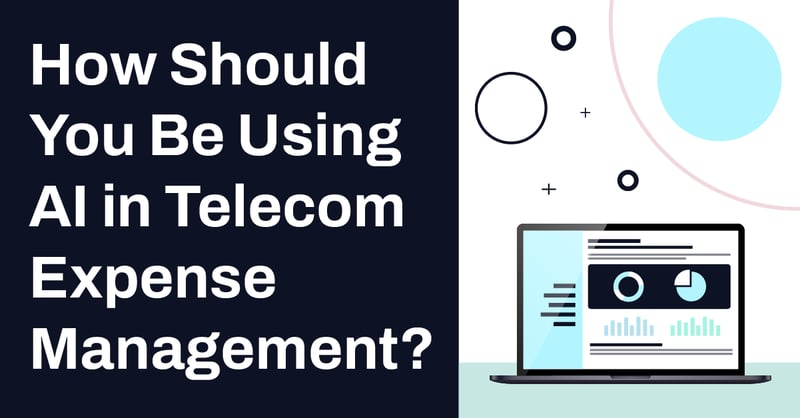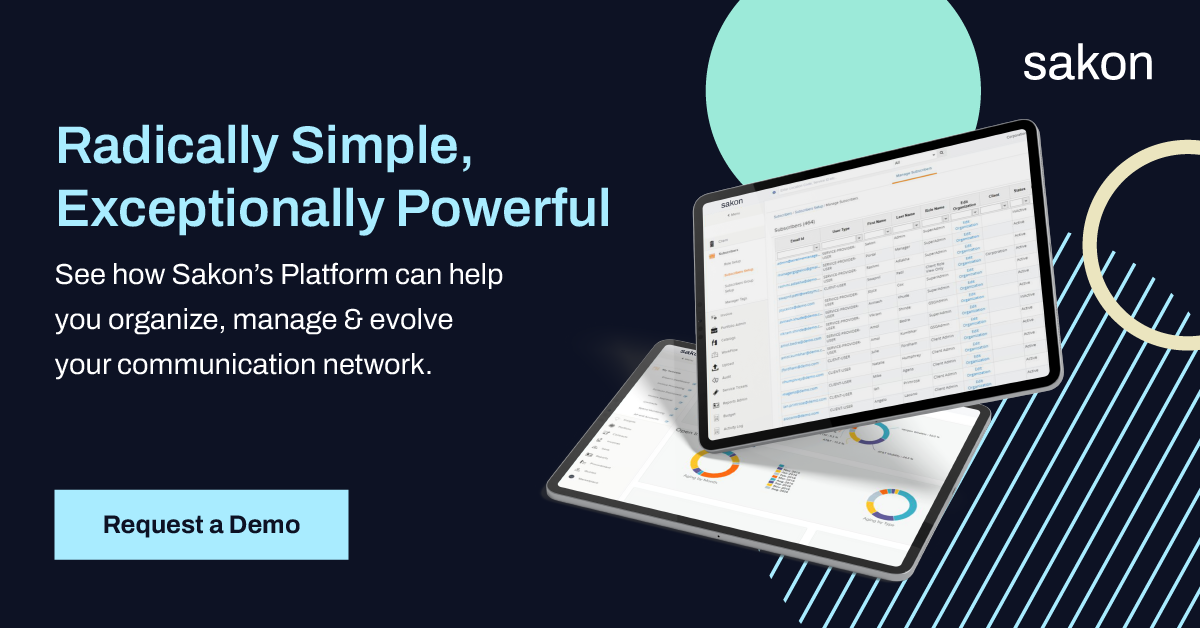Artificial Intelligence (AI) has come a long way in recent years. While it may not yet boast self-awareness like the Terminator films predicted, it’s already beginning to rival our ability to carry out tasks with pinpoint precision and control. Naturally, AI’s role in data analysis and workflow automation has made it a hot topic for enterprises looking to simplify and streamline their Telecom Expense Management (TEM) responsibilities.
The value AI can provide to your enterprise is undeniable, but that’s not to say it can assist with every element of TEM. Let’s dive deeper into what AI in telecom should look like, in addition to the tasks that should stay with your employees.
Where AI Works
Streamlining Invoice Workflows
Consider this — the average company takes roughly 25 days to process a single invoice manually from receipt to payment. For enterprises that are juggling various telecom expenses from multiple providers, this can lead to more late fees, higher processing costs, and missed cost-saving opportunities.
AI works to ingest invoice data rapidly and accurately and normalizes that data so enterprises can easily make sense of all their charges. Companies have had success deploying Robotic Processing Automation (RPA) technologies to automate their invoice workflows and ensure they’re being completed with more efficiency and fewer roadblocks.
If you’re consistently cross-checking invoices against purchase orders and worrying about duplicate records, AI can be a huge help in minimizing invoicing errors and getting your teams back to focusing on their most pressing responsibilities.
Identifying Cost Saving Opportunities
Ultimately, the success of your enterprise largely hinges on its ability to cut costs wherever possible. Enterprise telecom costs are complex and a great area to target for cost optimization. With the right AI technologies at your disposal, you can identify major cost-saving opportunities for your enterprise.
AI works to validate your telecom expenses at a detail that people can't match. It can help you pinpoint, amongst a sea of data, whether you’re paying for services that were or should be disconnected, as well as whether you are overpaying for services from what was previously negotiated. A TEM platform powered by AI will have automated checks in the system that highlight where your enterprise could be saving big bucks.
When you partner with the right TEM provider, savings from refunds and credits for billing errors can equate to over 5% annually, while a reduction in future spending can often reach 40% savings. Those kinds of cost-saving opportunities are hard to come by in today’s world, so your enterprise should work quickly to embrace AI as an effective means of securing your bottom line.

Automating Tedious Tasks
The most obvious benefit of utilizing AI in telecom expense management is its ability to automate otherwise manual tasks and free up your teams to add more value to your enterprise. From high-volume data analysis to automated chargeback and bill payment, AI in telecom is already bringing back valuable time and money to organizations that are embracing it.
When you focus your AI efforts on the areas of your business that are ripe for automation opportunities, you give your enterprise the best chance of driving results in the future. Take a close look at the largely manual processes of your employees’ day-to-day responsibilities, and consider how AI could be used to remove those mundane tasks and shift their availability to produce more meaningful work. Not only does this enable your teams to add more value to your enterprise, but it can also boost employee satisfaction and lower turnover rates.
A popular rebuttal to embracing AI is the fear that it will take away jobs from actual humans. In reality, AI requires real people to provide the necessary link to a real-world environment. Let’s consider the elements of your business that will still require that personal human touch going forward.
Where AI Falls Short
Vendor Management
Expert advice on how to handle the human side of telecom expenses cannot be fully outsourced to artificial intelligence. Finesse and intuition are critical to developing successful partnerships, both with your TEM provider and your telecom vendors. AI can’t read between the lines, which means your vendor management responsibilities should stay with your employees.
This isn’t to say that AI doesn’t have a place in supporting vendor management within your enterprise. Your employees can use AI to back up their expert insights and guidance in order to justify their findings and better nurture vendor relationships.
AI is good for a lot of things, but as it stands, you’re better off relying on real people to handle vendor management processes.
Personalized TEM Support
Let's say you just conducted a thorough summary of your TEM expenses from the previous year. Now, it's time to identify where the budget is being allocated and how costs can be minimized going forward. AI plays a major role in pulling those numbers together, but telecom expense management still requires human input to cross-reference your findings and provide real-life context.
A successful partnership with your TEM provider will undoubtedly rely on close collaboration to identify cost-saving opportunities and understand what future telecom expenses your business needs to prepare for. Situations will arise where your enterprise requires personalized guidance on its telecom expenses, and it’ll be up to your teams to communicate those needs to your TEM provider to ensure you’re receiving the right kind of support.
Software alone won’t empower your enterprise to achieve its cost optimization goals going forward. In order to maximize revenue and optimize telecom services as needed, your employees need to be the primary facilitators of telecom expense management.
Contract Negotiations
Nearly 47% of enterprise TEM customers have changed TEM vendors due to a lack of performance or unmet expectations. This often stems from contracts being drafted up that aren’t fully understood or agreed upon by both parties. When it comes to contract negotiations with your TEM provider, it’s important that you rely on your employees to ensure both your teams and your provider are on the same page.
AI won’t be as effective in identifying issues with your existing contracts. You’ve likely built a star-studded team of knowledgable experts at your enterprise, and you should lean on them to compare and contrast prices, provide reliable benchmarking processes, and secure more favorable terms for your company.
Without question, your employees know the ins and outs of the telecom market more than your AI technologies. Contract negotiations can be hard to navigate, and while AI can help back up your efforts, you should mainly look to your employees to dictate the negotiation process.
What Can AI Do for You?
Roughly 40% of telecom executives say they have garnered “substantial” benefits from cognitive technologies, with 25% having invested $10 million or more. Suffice to say, AI will play an increasingly important role in telecom expense management. But that doesn’t mean it will be your silver bullet to cutting costs and maximizing profits.
Ultimately, AI in telecom expense management should be used to support, not replace, your existing efforts. Look to industry leaders — as well as your employees — to get a sense of where to utilize AI within your enterprise. Your advanced technologies will only be as successful as the people managing them, so ensure you’re implementing artificial intelligence in a way that bolsters your existing efforts instead of hindering them.
Sakon believes in combining our sophisticated technologies with people-powered support in order to deliver above-and-beyond TEM solutions. To see how our platform could work within your enterprise, schedule a free demo today!
 Blogs
,
TEM
,
Telecom
Blogs
,
TEM
,
Telecom

